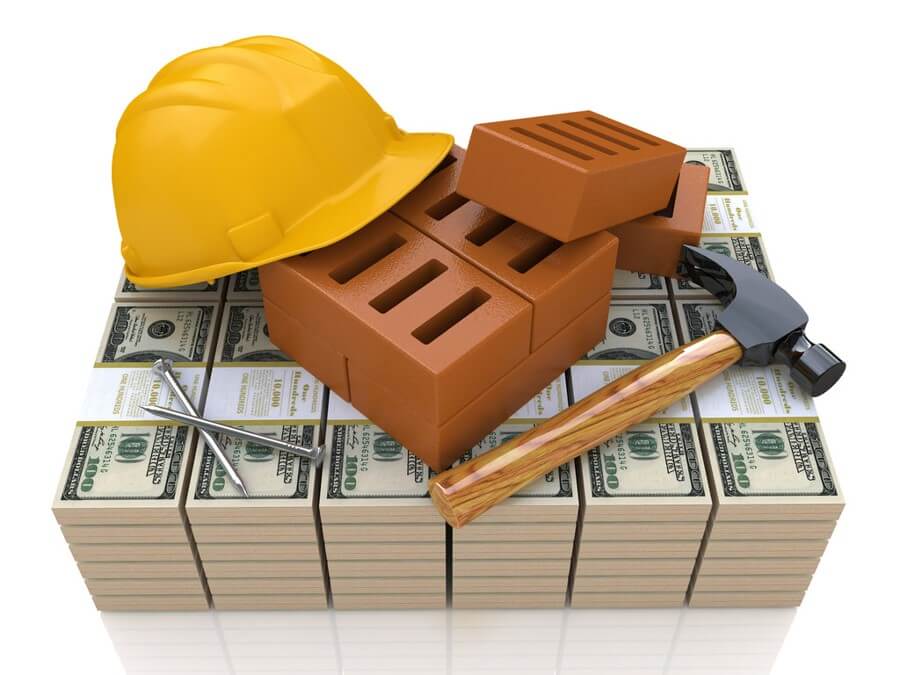Feb
What Owners Really Pay in Contractor Markup
- 2017
- admin
Contractor markup is a given when hiring a contractor for your project. You will have a bid or negotiated contract that will include a percentage for the contractor’s overhead and profit. If you have requested a cost breakdown from your contractor you will likely see a percentage for their markup or profit.
What you probably won’t see is the markup for materials purchased and for material and labor costs as well as the overhead and profit for any trades or subcontractors who are awarded work by a general contractor for your project. You also will not see what the contractor paid for materials he has bought in bulk and taken from his inventory to use on your project.
Nobody expects a contractor to work for free, if they did, they wouldn’t be in business for long and we’d be doing a lot more new construction and renovation work. Before signing a contract it helps to have a clear understanding of what you are really paying for and gives you a basis for negotiation.
What’s included in Construction Overhead?
Construction overhead costs are basically a percentage of the general contractor’s operating expenses charged to your project. These (indirect) costs are not necessarily related specifically to your project but rather their cost of doing business. These expenses, which get markup, may include any or all of the following:
- Project management
- Superintendents
- General foremen
- Estimating
- Engineering
- Coordination
- Expediting
- Purchasing
- Detailing
- Legal expenses
- Accounting
- Data processing
- Other administrative expenses
- Shop drawings
- Governmental approvals
- Auto insurance and umbrella insurance
- Pickup truck costs
- Cost for the use of tools
Construction overhead costs are not to be confused with “General Conditions” costs that are specific to your project and get their own contractor markup percentage.
General Conditions costs include items like dumpsters, portable toilets, small tools and consumable items, project staff dedicated to your project (not general office staff), equipment rental specific to your project, drinking water, cleanup, temporary utilities and temporary protection to name a few.
These items are essential to completion of the work but not part of the scope of work illustrated in the contract documents.
Your contractor’s overhead portion of the markup will be a percentage of the overall cost of your work – let’s say 10% as an example. He may add another 5% as a fee for a total markup of 15%.
Because this construction markup is based on the total cost of your scope of work, his markup is on top of the overhead and profit already included in the cost of each of his subcontractors and suppliers.
Subcontractor markup will vary by trade and can be upwards of 25% depending on the trade and whether the work is union or non-union.
To summarize, the contractor marks up work performed his own employed workers and each subcontractor (or supplier) hired by the contractor will mark up their own work.
In aggregate, the contractor will again markup his work (employed workers) and the total sum of the subcontractors work by adding overhead and profit to these totals.
Don’t Pay for this Contractor Markup Twice
While contractor overhead and profit costs are largely unavoidable as well as the layered markup you are paying due to subcontractor and supplier markups, you should be able to negotiate these costs with your contractor.
It’s probable your contractor will have relationships established with multiple trades who may be willing to work with you on these percentages just to get a contract for your work in this troubled economy.
You may also include language in your contract regarding how any changes to your scope of work are priced including a negotiated contractor markup percentage. For example, adding these terms to your agreement may help you to keep your costs down:
- Contractor will pass any cash discounts for materials ordered for your project back to you – this is an opportunity to get some money back or allocate to a contingency
- Any rebates or refunds generated from returns or surplus materials should go to you — if not, this becomes additional contractor profit
- Small tools purchased by the contractor to do your work should be turned over to you at the end of the project (if you want them). After all, you paid for them!
- Make sure your contractor does not charge overhead and profit on sales or use tax…this can add up
- Your contractor should not charge sales tax on labor
- Ensure that the fee charged by your contractor for changed work does NOT include overhead expenses you’re already paying under the original contract. This is especially true if the changed work is done within the original contracted time period and does not extend the schedule
- Make sure your contractor provides costs for any changes within a specified period and that the cost is agreed to before the changed work begins
- The costs paid to your contractor for work he does with his own employees may be padded with added markup. This is the difference between what they’re workers are actually paid and the “billed rate” they charge you. Ask for backup on billable rates.
- Include language in your contract that gives you the right to examine the contractor’s records to verify the accuracy and appropriateness of the pricing data used to estimate costs in their change proposals
- Consider having your contractor work under a guaranteed maximum cost contract where any overruns within the contracted scope of work are at the contractor’s expense and not yours


